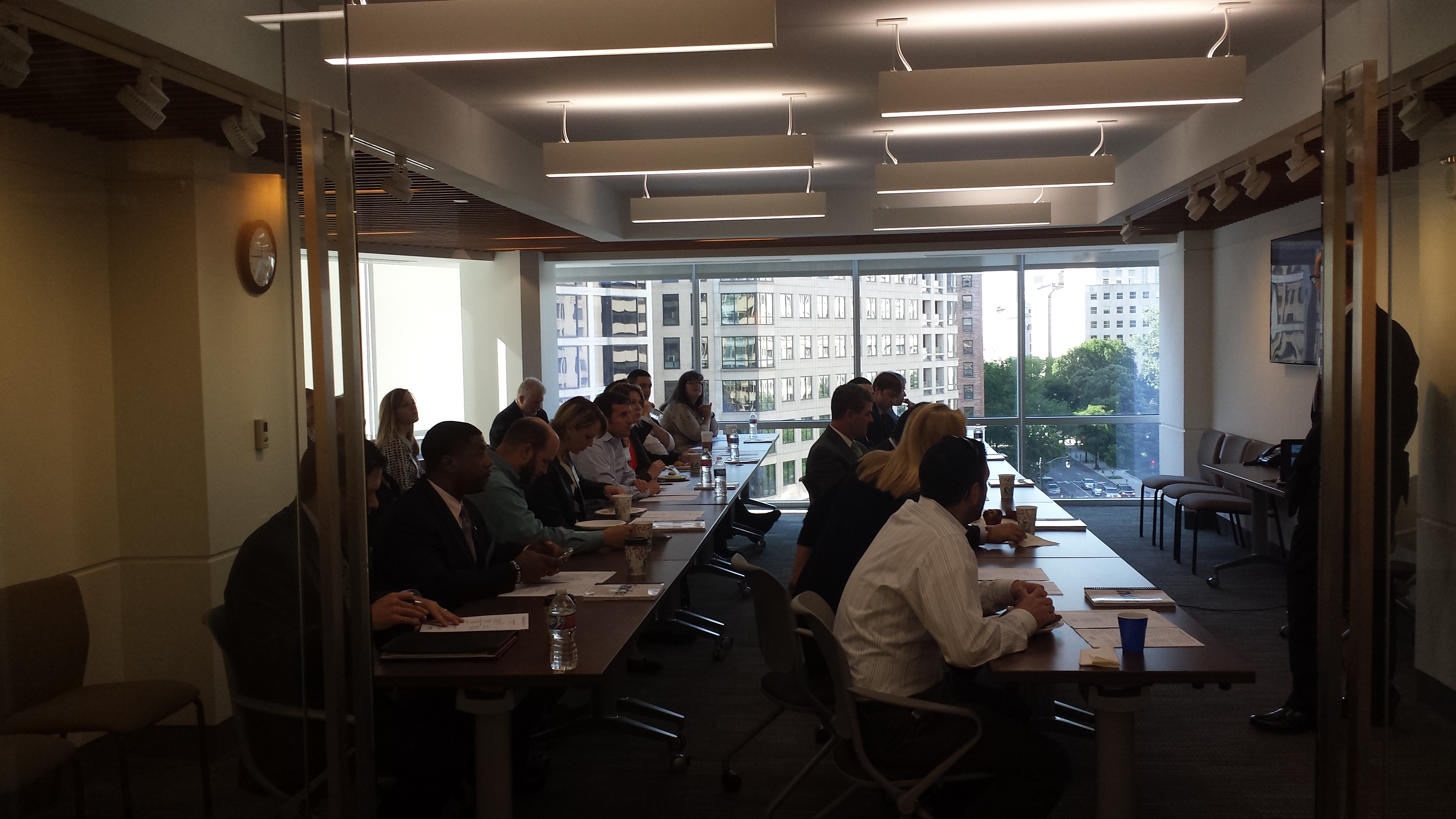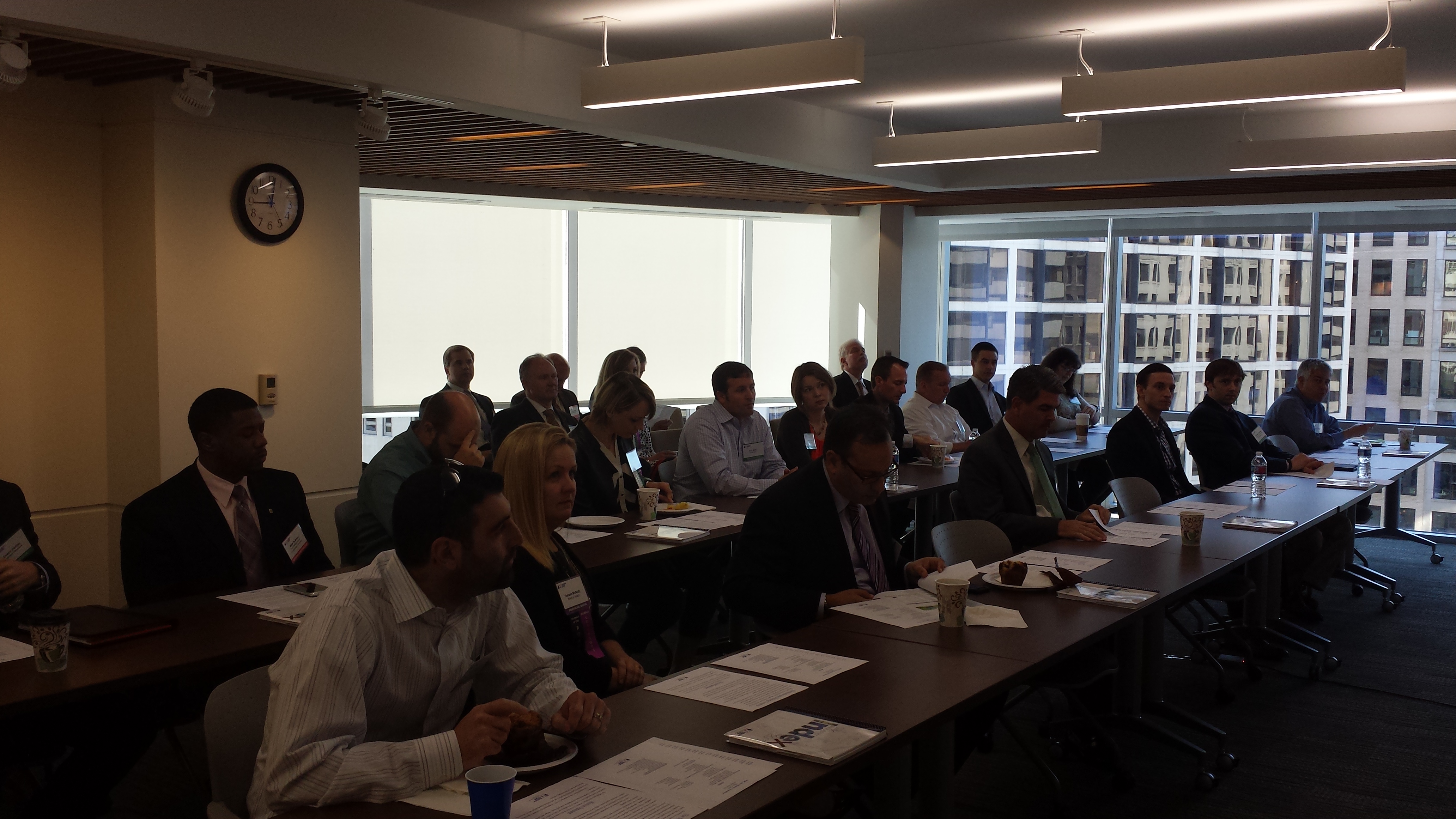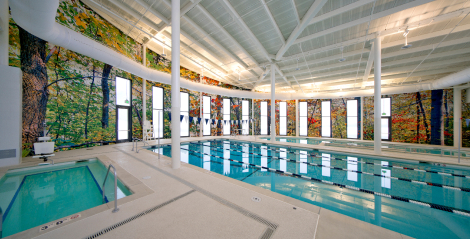A Hard Rain Is Gonna Fall:1
Construction Stormwater Permitting under the Clean Water Act in the District of Columbia, Maryland, and Virginia
Introduction
Changes within the past year to the National Pollution Discharge Elimination System (NPDES) procedures for discharges of stormwater from construction sites in Maryland and Virginia make this an appropriate time to summarize the basics of NPDES stormwater permitting in the Washington, D.C. region.
In 1972, the Clean Water Act was amended to create the NPDES (pronounced “nipʹdeez”) program. NPDES essentially prohibits the discharge of pollutants from any point source into the nation's waters except as allowed under an NPDES permit. “Discharge of pollutants” includes, among other things, stormwater runoff carrying sediment from construction sites. Subject to certain exceptions and limitations, parties engaged in construction activities involving earth disturbances must have a NPDES permit in order to lawfully discharge stormwater from their sites.
The EPA has in recent years brought several NPDES enforcement actions against regional and national general contractors as well as well-known homebuilders and big-box retailers. Given the potential fines of thousands of dollars per day per violation and serious potential legal consequences such as debarment from participation in federal government contracts, applicable NPDES stormwater permitting requirements must be understood by owners, developers, and contractors.
Although the EPA generally oversees and enforces the NPDES program, many states have been delegated authority to administer NPDES permits within their boundaries. In Washington, D.C. metropolitan area, Maryland and Virginia have been delegated such authority, while the EPA retains the authority to issue permits in the District of Columbia. This article will summarize the differing regulations and procedures that exist in these three jurisdictions for issuing NPDES permits and for terminating permit coverage once projects are complete.2
District of Columbia
What projects require NPDES permit coverage?
As noted, the EPA directly administers NPDES permitting in the District of Columbia – although the District Department of Environment performs the inspections of permitted sites for compliance with the permit. The EPA requires NPDES permit coverage for discharges to the “waters of the United States” from any construction project in the District of Columbia that will disturb one or more acres of land, or will disturb less than one acre of land but is part of a “larger common plan of development or sale” that will ultimately disturb one or more acres of land. This one acre threshold for NPDES coverage has been carried over by almost all states that have been delegated NPDES authority. Note that the amount of land disturbance means only the surface area actually disturbed, not the size of the overall site.
“Waters of the United States” has a very broad legal definition that covers all types of waters (rivers, streams, lakes, ponds, wetlands, etc.) that could be used for, or could have an effect on, interstate or foreign commerce (e.g. tourism, recreation, fishing, industrial use, travel, etc.). Recently, EPA proposed to expand the definition to include most seasonal and rain-dependent streams and wetlands located near rivers and perpetual streams.
A ‘larger common plan of development or sale’ is described by EPA as a “contiguous area where multiple separate and distinct construction activities may be taking place at different times on different schedules under one plan.” For example, if a developer buys a 20-acre lot and builds roads, installs pipes, and runs electricity with the intention of constructing homes or other structures sometime in the future, this would be considered a larger common plan of development or sale. A permit is required for each separate and distinct construction activity within the larger common plan, even if the individual construction activity (individual house in the example above) by itself disturbs less than one acre of land.
The great majority of construction projects in the District of Columbia can obtain NPDES permit coverage under EPA’s 2012 NPDES General Permit for Discharges from Construction Activities (commonly referred to as the “Construction General Permit” or “CGP”). Certain projects may be required to obtain coverage under an individual NPDES permit tailored to their special circumstances or under an alternate General Permit, instead of under the CGP. This article will focus only on CGP coverage.
Which parties need EPA NPDES CGP coverage?
Each “operator” of a District of Columbia project meeting the project description above will need NPDES permit coverage. An operator is a party associated with a construction project that meets either of two criteria:
- The party has operational control over construction plans and specifications, including the ability to make modifications to those plans and specifications; or
- The party has day-to-day operational control of those activities at a project that are necessary to ensure compliance with the permit conditions (e.g. they are authorized to direct workers at a site to carryout activities required by the permit).
This EPA definition of “operator” has been uniformly adopted by states that have been delegated NPDES authority.
These two criteria typically encompass both the project owner and the general contractor. Subcontractors are generally not considered operators, but they can be if they are contractually responsible for all stormwater measures and inspections at the site. A site can have multiple operators, and all of them are required to have NPDES permit coverage.
How is EPA NPDES CGP coverage obtained?
In the District of Columbia, an operator obtains coverage under the NPDES CGP by electronically submitting a Notice of Intent (“NOI”) directly through the EPA’s website. The NOI contains information about the operator, site, planned construction, anticipated discharges from the site, etc. The NOI also confirms that a Stormwater Pollution Prevention Plan (“SWPPP,” pronounced “swip”) for the project has been prepared in advance, and that certain endangered species protection and historic preservation requirements have been met.
The SWPPP is a very important document, and EPA’s CGP contains the detailed requirements for the contents of the SWPPP. Essentially, the SWPPP details all the factors relevant to stormwater at the site and explains how stormwater pollution will be prevented, including when and how stormwater control measures will be constructed, inspected, and maintained. Each operator may have an individual SWPPP or multiple operators on the site can jointly develop or follow a single SWPPP.
An operator must submit its NOI at least 14 calendar days prior to commencing earth-disturbing activities, or, if a new operator on an existing project, 14 days prior to taking over control. An exception to the advance submission requirement exists for “emergency-related projects.”
CGP coverage is effective 14 days after EPA acknowledges receipt of the NOI on EPA’s website, unless the EPA notifies that authorization has been delayed or denied. By EPA definition, installation of stormwater best management practices (“BMPs”) is not considered to be earth-disturbing activity, so silt fences, etc. can be installed prior to receiving permit coverage. This exemption for BMP installation is not clear in other jurisdictions.
How is EPA NPDES CGP coverage terminated?
NPDES permit coverage must be terminated. Timely terminating NPDES CGP coverage can be as important as timely obtaining coverage initially. Stopping stormwater site inspections and maintenance before coverage is formally terminated can lead to Clean Water Act violations. Unless you have transferred control of the site to another covered operator or you have obtained coverage under an individual or alternative general NPDES permit, termination of NPDES coverage under the CGP requires completion of all earth-disturbing activities at the site. In addition, four other conditions must be met:
- You have finally stabilized any areas that (1) were disturbed during construction, (2) are not covered over by permanent structures, and (3) were under your control during construction; and
- You have removed all construction materials, waste, and equipment; and
- You have removed all temporary stormwater controls, unless biodegradable; and
- You have removed all potential pollutants and pollution-generating activities associated with construction.
These conditions are somewhat paraphrased here, and contain additional details. For instance, “final stabilization” of the site has several criteria of its own. In particular, to be finally stabilized, all vegetatively stabilized areas must have uniformly established perennial vegetative cover (without bare patches) providing 70 percent or more of the density of coverage that was provided by vegetation prior to commencing earth-disturbing activities on the site.
When a site has met the requirements for termination of coverage, a Notice of Termination (“NOT”) must be electronically submitted to EPA within 30 days. The operator must identify the grounds for termination, and must certify that the information is true, accurate, and complete. Termination of an EPA NPDES permit is effective at midnight of the day that the complete NOT is processed and posted on the EPA’s website.
Maryland
Unlike the District of Columbia, Maryland has been delegated authority by the EPA to administer the NPDES program. The Maryland Department of the Environment (MDE) runs the state’s NPDES program. Maryland has its own General Permit for Stormwater Associated with Construction Activity (“General Permit”), which resembles EPA’s CGP but with some significant differences. Maryland’s General Permit was recently revised, effective January 1, 2015. Almost all Maryland projects can obtain necessary coverage under the General Permit, but MDE may allow or require certain projects to be covered by an individual NPDES permit tailored to them or an alternative General Permit. The General Permit explains when and how an individual permit must be obtained instead.
What projects require a Maryland NPDES permit?
A person planning a construction activity involving clearing, grading, or excavation that will disturb one or more acres of land, or will disturb less than one acre of land but is part of a larger common plan of development or sale that will ultimately disturb one or more acres of land, must have NPDES permit coverage in order to discharge stormwater to the waters of the State. Land disturbance is measured by the surface area actually disturbed, not by the overall site size.
“Larger common plan of development or sale” means an area where multiple separate and distinct construction activities are occurring under one plan. Under Maryland’s CGP, the “plan” in a common plan of development or sale is broadly defined as any announcement or piece of documentation (including a sign, public notice or hearing, sales pitch, advertisement, drawing, permit application, zoning request, computer design, etc.) or physical demarcation (including boundary signs, lot stakes, surveyor markings, etc.) indicating that construction activities may occur on a specific plot. Therefore, construction of a building disturbing less than one acre of land may require NPDES permit coverage if additional construction is planned in the same development that will push the total land disturbance over one acre.
The definition of “waters of the State” differs from “waters of the United States” as used in the District of Columbia. It includes surface and underground waters in Maryland, the Atlantic Ocean off the Maryland coast, the Chesapeake Bay and its tributaries, and all ponds, lake, rivers, streams, tidal and nontidal wetlands, public ditches, tax ditches, and public drainage systems within this State. Also included in waters of the State is the flood plain of free-flowing waters determined by the Department of Natural Resources on the basis of the 100-year flood frequency, even though no water may be present. There is no requirement that the waters impact commerce.
Which parties need Maryland NPDES permit coverage?
A person planning a construction activity described above must have permit coverage. As a practical matter, the project owner almost always submits the NOI to obtain coverage. However, the General Permit requires a person submitting an NOI who does not intend to control the permitted activities on the site (such as the owner, typically) to transfer authorization under the General Permit to the person who will control the permitted activities (typically the general contractor). In such cases, the owner and general contractor sign a Transfer of Authorization form and submit it to MDE.
How is Maryland NPDES permit coverage obtained?
NPDES coverage is obtained in Maryland by submitting an NOI via MDE’s new electronic system. The NOI contains information about the operator, the site, the planned construction, and discharges from the site. MDE will not begin processing the NOI until the applicant provides certification that an erosion and sediment control plan (ESC plan) was submitted to the local ESC plan approving authority (typically the County Soil Conservation District). Uniquely, Maryland also requires proof of workers’ compensation coverage as part of the NOI application and won’t begin processing the NOI without that proof.
Once processing begins, MDE will post a notice of the NOI on its website, and members of the public have the opportunity to request that the project be required to obtain an individually-tailored NPDES permit instead of coverage under the General Permit. This notice period lasts 14 days.
Once the notice period has expired without objection, and the applicant has shown MDE that the ESC plan and the stormwater management plan have been approved, MDE will make every effort to issue notice of approval of General Permit coverage within 48 hours. A transfer of coverage from an owner is effective upon MDE’s receipt of the Transfer of Coverage form signed by both the owner and party in control of the permitted activities at the site.
It is important to note that coverage under Maryland’s NPDES General Permit does not take the place of obtaining local approval of a stormwater management plan. State law requires approval of a stormwater management plan before grading or construction permits will be issued.
How is Maryland NPDES CGP coverage terminated?
As in the District of Columbia, NPDES General Permit coverage in Maryland must be timely terminated. When all portions of a site have been permanently stabilized and all stormwater discharges associated with construction activities have been eliminated, the permittee for the site must submit a Notice of Termination form to MDE. NPDES coverage expires upon MDE’s receipt of the NOT form.
“Permanent stabilization” under Maryland’s General Permit means that all soil disturbing activities at the site have been completed and the most stringent of the following criteria has been met:
a. The site meets the stabilization requirements of the approved plans;
b. The site meets the stabilization requirements in the 1994 Standards and Specification for Soil Erosion and Sediment control or any updated standards issued by MDE; or
c. Either of the following two criteria are met:
i. A uniform (e.g. evenly distributed, without large bare areas) perennial vegetative cover with a density of 70 percent of the native background vegetative cover for the area has been established on all unpaved areas and areas not covered by permanent structures, or
ii. Equivalent permanent stabilization measures (such as the use of riprap, gabions, or geotextiles) have been employed.
NPDES coverage expires upon MDE’s receipt of the NOT. Until Maryland creates an electronic system for submitting NOTs, it is best to submit NOTs by certified mail, so you have a record of MDE’s receipt.
Virginia
Virginia has been delegated authority by the EPA to administer the NPDES program, now referred to in Virginia as VPDES (pronounced “vipʹdeez”). For years, stormwater discharge permitting was administered at the state level by the Virginia Department of Environmental Quality (DEQ), while erosion and sediment control permitting was handled at the local level. In 2014, however, Virginia law was changed to require many counties, cities, and towns to become approved local Virginia Stormwater Management Program (“VSMP”) authorities to administer the VPDES program. The remaining jurisdictions were allowed to choose whether they accept delegation of VPDES stormwater administration.
All major Virginia jurisdictions are now approved VPDES authorities, including all the counties, cities, and towns in the Washington, D.C. metropolitan area. However, approximately 50 counties, a dozen cities, and 140 towns are not approved VSMP authorities, and DEQ remains the direct VPDES permitting authority in those jurisdictions.
Almost all Virginia projects can obtain necessary coverage under the General VPDES Permit for Discharges of Stormwater from Construction Activities (“VPDES General Permit”), but some projects may be required to obtain coverage under an individual VPDES permit tailored to their situations instead of coverage under the VPDES General Permit.
What projects require a VPDES permit?
VPDES permits are needed for all land-disturbing construction activities disturbing one or more acres of land that discharge to surface waters of the Commonwealth, with certain limited exceptions. As in the District of Columbia and Maryland, construction disturbing less than one acre will nevertheless need permitting if it is part of a larger common plan of development or sale that combined disturbs one or more acres. The definition of “surface waters of the Commonwealth” is identical to EPA’s definition of “waters of the United States” discussed above with regard to the District of Columbia.
Approved VSMP authorities are allowed to reduce the threshold for requiring a permit to below one acre of land disturbance, so local VSMP requirements must always be checked.
Which parties need VPDES permit coverage?
All “operators” are required to obtain permit coverage to discharge stormwater from regulated construction sites. In the context of stormwater associated with construction activity, “operator” includes (i) the person/entity with direct operational control over construction plans and specifications, including the ability to make modifications to those plans and specifications, and (ii) the person/entity with day-to-day operational control of those activities at a project that are necessary to ensure compliance with a stormwater pollution prevention plan for the site or other state permit or VSMP authority permit conditions. In other words, typically the project owner and the general contractor, and sometimes certain subcontractors, need to obtain VPDES permit coverage.
How is VPDES General Permit coverage obtained?
In most jurisdictions, an operator must submit an application for land disturbance, including a VPDES permit Registration Statement, to the local approved VSMP authority. The Registration Statement is Virginia’s version of an NOI, and it contains information about the operator, site, planned construction, and anticipated discharges from the site. Typically, the operator must also submit erosion and soil control plans, a stormwater management plan, and/or a Stormwater Pollution Prevention Plan (SWPPP). If not required to be submitted, a SWPPP must at least be prepared as of the date the Registration Statement is submitted. Exact requirements vary among the local approved VSMP authorities.
For state or federal projects, and in jurisdictions without a local approved VSMP authority, the operator must submit the Registration Statement directly to the Virginia DEQ.
Single-family detached home construction that will disturb one or more acres or is part of a common plan of development or sale that will disturb one or more acres is exempted from the requirement to submit a Registration Statement but is still considered to be covered by the VPDES General Permit. A coverage letter must be downloaded from the DEQ website, and a SWPPP is still required.
The local VSMP authority is allowed sixty days to act on an application. Once the local VSMP authority approves the plans submitted with the Registration Statement, the authority will forward it to Virginia DEQ for issuance of the VPDES General Permit authorization. Virginia DEQ will then authorize coverage after the operator pays DEQ’s invoice for the permit fee. In some jurisdictions, the local VSMP authority collects DEQ’s share of the permitting fees up front. For state and federal projects and projects in jurisdictions without a local VSMP authority, DEQ will act on Registration Statements submitted directly to it within thirty days. Typically, issuance of VPDES permit coverage (where required) is a prerequisite to the local VSMP authority issuing a land disturbance permit or other local permit.
How is VPDES General Permit coverage terminated?
A notice of termination (“NOT”) must be filed within thirty days after one or more of the following conditions have been met:
- Necessary permanent control measures included in the SWPPP for the site are in place and functioning effectively and final stabilization has been achieved on all portions of the site for which the operator is responsible.
- Another operator has assumed control over all areas of the site that have not been finally stabilized an obtained coverage for the ongoing discharge.
- Coverage under an alternative VPDES or state permit has been obtained; or
- For residential construction only, temporary soil stabilization has been completed and the residence has been transferred to the homeowner.
For conditions 2, 3, and 4, termination of coverage is effective at midnight on the date the NOT is submitted to the VSMP authority. For condition 1, coverage terminates upon notification from DEQ that the requirements have been met, or sixty days after submittal of the NOT, whichever occurs first.
Where more than one contractor is in involved on a site, individual contractors who obtained VPDES permit coverage in their own names as “operators” may need to file separate NOTs when complete their respective scopes of work.
Conclusion
This article has summarized only the basics of obtaining and terminating NPDES construction stormwater discharge permits in the District of Columbia, Maryland, and Virginia. Not covered are the many detailed factors that may impact permitting, such as the presence of endangered or impaired waters or application of the Endangered Species Act. Of course, the obligations imposed by a NPDES permit during construction, such as the requirement for regular stormwater inspections of the site, are separate topics unto themselves. Nevertheless, this article covers the basic NPDES requirements, so you can obtain additional information if it appears that your project will require NPDES coverage.
###
______________________
1 Apologies to Bob Dylan.
2 Separate and apart from NPDES stormwater permitting, these jurisdictions also have state, county, or municipal regulations that pertain to erosion and sedimentation control. These “local” requirements are outside the scope of this article.
About the author:
 Nick Hoogstraten is Senior Counsel with the Washington, D.C. office of Peckar & Abramson, P.C. P&A is a nationwide law firm committed to providing a full range of legal services to the construction industry.
Nick Hoogstraten is Senior Counsel with the Washington, D.C. office of Peckar & Abramson, P.C. P&A is a nationwide law firm committed to providing a full range of legal services to the construction industry.

 Nick Hoogstraten is Senior Counsel with the Washington, D.C. office of Peckar & Abramson, P.C. P&A is a nationwide law firm committed to providing a full range of legal services to the construction industry.
Nick Hoogstraten is Senior Counsel with the Washington, D.C. office of Peckar & Abramson, P.C. P&A is a nationwide law firm committed to providing a full range of legal services to the construction industry.



 Anne Marie Tombros has been in the construction industry in the Metro DC area since 1985. She started working for general contractors before working in the construction consulting arena, so she understands the demands of prime contractors, subcontractors, and owners. She has been involved in the WBC since 2006. In 2009 she started her own consulting company, Vango Consulting, a woman-owned small business providing construction CPM scheduling and project controls services. She is currently serving the second year of a three year term as a member of the Board of Directors for the WBC.
Anne Marie Tombros has been in the construction industry in the Metro DC area since 1985. She started working for general contractors before working in the construction consulting arena, so she understands the demands of prime contractors, subcontractors, and owners. She has been involved in the WBC since 2006. In 2009 she started her own consulting company, Vango Consulting, a woman-owned small business providing construction CPM scheduling and project controls services. She is currently serving the second year of a three year term as a member of the Board of Directors for the WBC.